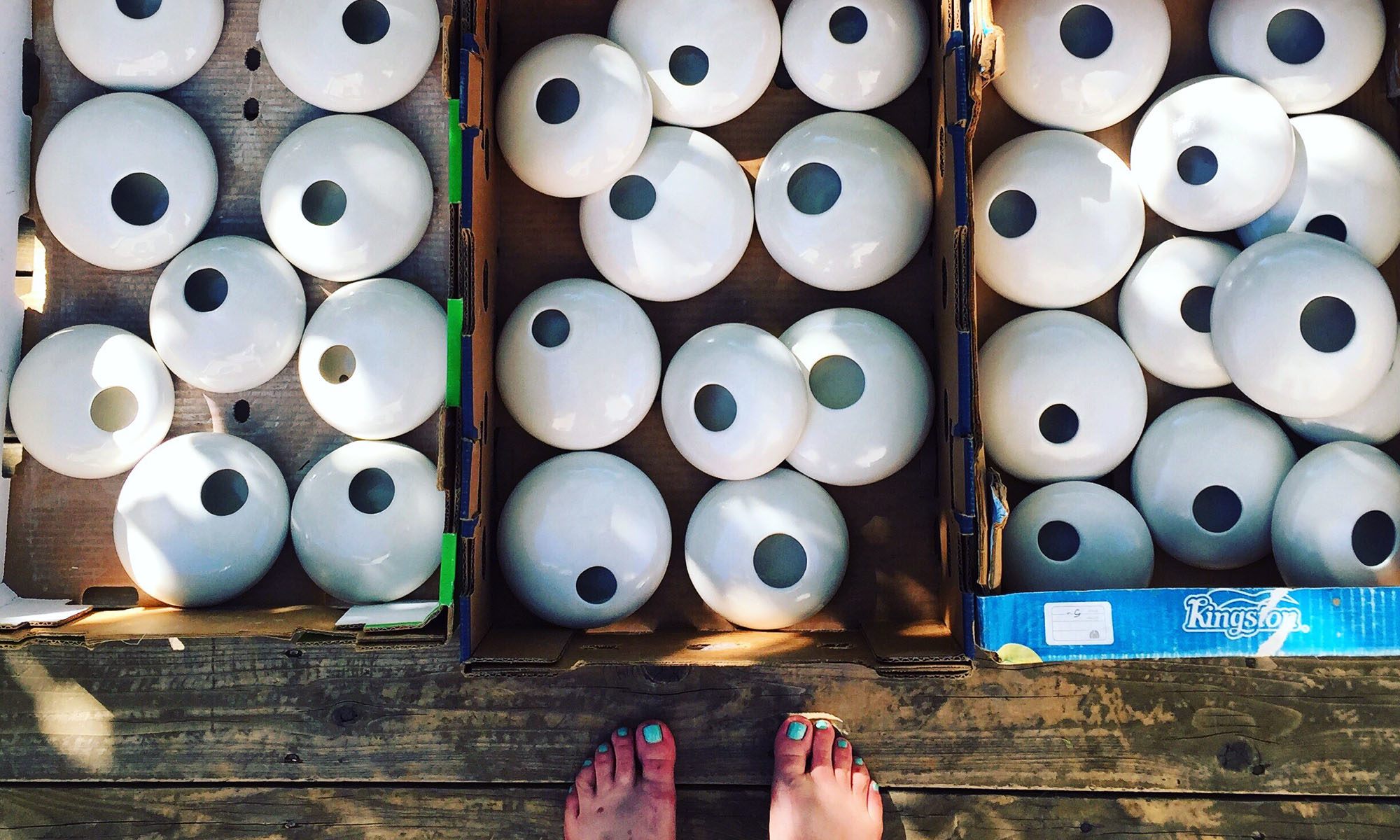You might be asking what this post, “New Contemporary Mailbox Design With Extra Large Mailbox” has to do with pottery. Allow me to explain how excited I am about this mailbox.
As an independent artist, I sell my work online throughout the year. After moving to our new home last summer, I realized that our standard sized mailbox just didn’t cut it for placing outgoing mail, particularly large packages, in it.
I started researching contemporary mail box designs on Pinterest (where else?) for ideas. I searched for designs that would complement our mid 1960’s home.
After sharing my efforts with my father in law, he offered to build it for me if I could come up with some sketches. I thought about busting out AutoCad, but, he works well with a loose idea, provided that he can improvise slightly. As an artist, I get that impulse.
New Contemporary Mailbox Design With Extra Large Mailbox
This spring, I purchased this mail box online and gave it to my father in law. The dimensions are 17.91″L x 12.6″W x 14.17″H which is perfect for most items that I mail.
I also shared these sketches.


I happen to be married to someone who has an aesthetic opinion in regards to what we bring into our home or what we build – including in the garden. So, we hemmed and hawed over the design, ultimately agreeing on a version of the sketch above. It morphed somewhat due to the logistics of the size of the mailbox, but my father in law loves this kind of a challenge and we gave him free reign as long as it was an approximation of our intent.
Getting Closer
After months of sketches and reviewing models. Yes, my father in law made little maquette versions of what he thought would work. I’m only sorry we don’t have photos. We ended up tearing them apart to build a version of our final design before thinking to take photos. As a former landscape designer, I really appreciated these models!
Final Reveal of Our New Contemporary Mailbox Design With Extra Large Mailbox

My husband and father in law installed the new mailbox last weekend. I LOVE it! It’s amazing and so much better than our old one.

In the meantime, I’ve added some plantings to the area to freshen it up and so many of our neighbors have commented positively on our efforts. Our mailman also approves. 🙂

My father in law used redwood to build the mailbox since it’s weather resistant. He also decided to stain it. I don’t love the color, but it does go well with the red brick of our home. He also had a say in part of the design since he built it after all.

We purchased floating numbers from Home Depot. I can’t remember the brand, but If I find it, I’ll share.
Wait, so what does this have to do with pottery?
- I can put large packages in the mailbox
- Time saver – I don’t have to arrange to have someone pick it up or take packages to the post office myself
- It’s a good cross over exercise to sketch a design and then execute the object in real life.







































